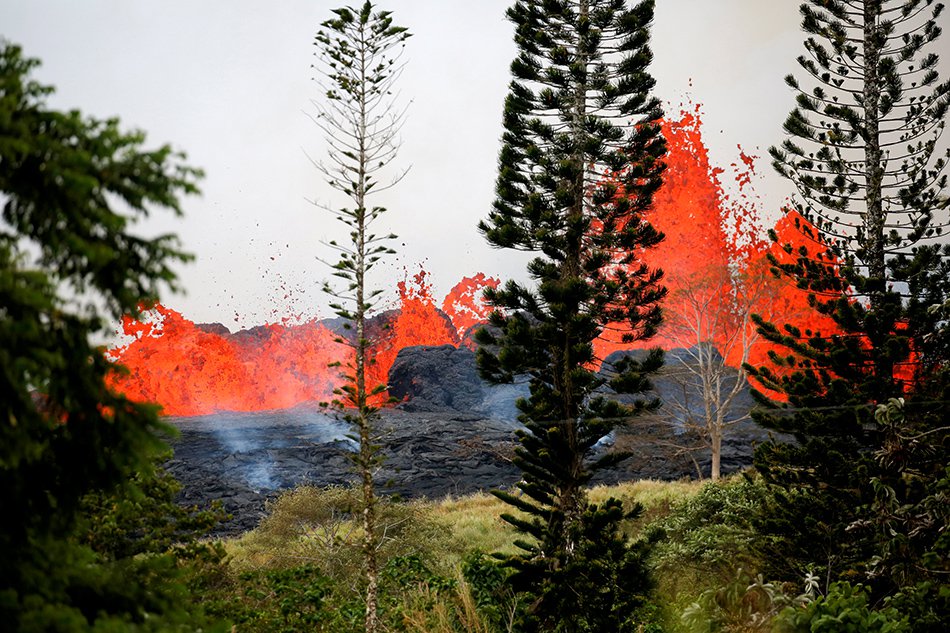Cruise ships have canceled stops on Hawaii’s Big Island. Hotel rooms will sit vacant this summer despite price cuts.
And guest house owners and tour guides that depend on the 2 million visitors each year to Hawaii Volcanoes National Park are wondering how long their families will go without any income.
Tourism authorities say summer bookings for hotels on Hawaii’s Big Island have fallen almost 50 percent since the volcano began spewing lava and toxic gases on May 3.
The closure of the park, the state’s top tourist destination, alone is costing the island $166 million, the National Park Service said on Monday.
The lost revenue rises to $222 million when some 2,000 jobs indirectly impacted by park tourists are included, according to a park service report.
Tourism is the Big Island’s largest industry, and by far, biggest employer, providing more than 30 percent of private sector jobs in 2017, according to the Hawaii Visitors Bureau.
Erik Storm’s EcoGuides business, which conducts tours of Hawaii Volcanoes National Park, ground to a halt a month ago when volcanic conditions made it too dangerous to visit lava areas.
“We have a family to support so we hope that the National Park will reopen again soon, otherwise this could have a serious impact on our life.”
SPOOKED BY LAVA
The volcano, however, shows no sign of quieting down. Geologists say the current cycle of eruption is among the worst events in a century from one of the world’s most active volcanoes. A series of Kilauea eruptions in 1955 lasted 88 days.
Potential visitors to the Big Island have been spooked by images of lava torching homes, soldiers wearing gas masks and now deadly white clouds of acid and glass shards as molten rock streams into the Pacific.
While Kilauea’s lava flows are in a small, roughly 10-square-mile rural area in the southeast Puna district, the volcano is having an impact ontourism across the Big Island, home to 200,000 people.
Beverly Oka’s family-run Uncle Billy’s Kona Bay Hotel is 120 miles (193 km) west of the lava flows, but bookings through the summer months are down around 40 percent.
“We are not affected. We have some vog, but not more than usual,” said Oka of the volcanic smog that routinely blows from Kilauea, which has been in a near constant state of eruption since 1983. Her hotel is offering a 30 percent discount to try to lure customers.
Norwegian Cruise Line cancelled stops on the Big Island for its cruise ships due to “adverse conditions.” Royal Caribbean Cruises nixed a port call in Hilo, the island’s largest city, which is about 20 miles (32 km) northeast of the volcano.
Rob Guzman and his husband Bob Kirk fled their guest-house rental business just 6 miles (10 km) from the lava flows, unnerved by near constant tremors, clouds of toxic sulfur dioxide gas and risks highway escape routes would be cut off.
“We’ve lost more than half of our household income and many other people will be in the same situation indefinitely,” said Guzman, a resident of Kalapana Seaview Estates, who is staying with friends north of Hilo.






